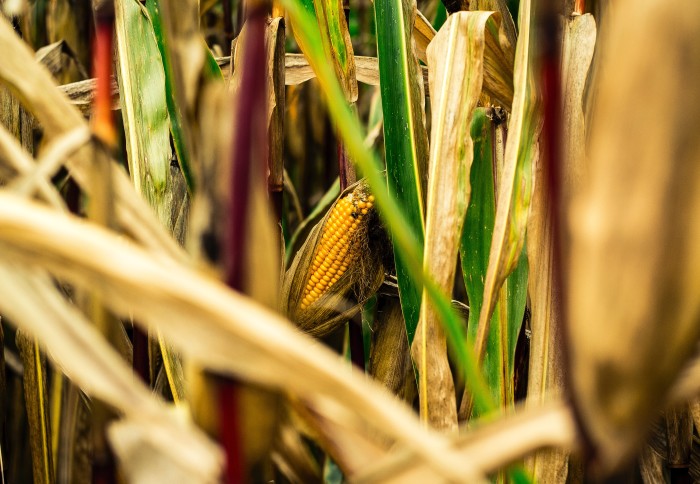

Researchers have devised a new method that reuses waste plant material instead of fossil fuels for energy, material and chemical generation.
Researchers from Imperial College London have developed a new environmentally friendly method to produce energy, materials and chemicals. It uses sustainable feedstocks created from the repurposing of waste plant material, and has the potential to replace petroleum refineries.
By utilising a specific type of salt, the team from Imperial’s Department of Chemical Engineering found that they could extract different components of plants and use them to manufacture a variety of products in a sustainable way. This includes the creation of biofuels, paper, textile fibres and platform chemicals used in the chemical industry.
In their research, published in Trends in Chemistry they created a more sustainable and less polluting technology for the processing of lignocellulosic biomass – the most abundant renewable feedstock on earth.
Their findings will help address key environmental challenges like combating climate change whilst also reducing a major source of pollution.
Reducing dependence on fossil fuels
Society is highly dependent on fossil fuels for generating energy, chemicals and materials and these have significant impacts on both the environment and human health.
Addressing our dependence on fossil fuels, particularly in line with international Net Zero targets to tackle climate change, will involve a transition to a bio-based economy which utilises plant biomass rather than fossil fuels.
Biorefineries that use non-edible plant feedstocks are particularly useful as they do not compete with food crops, are geographically abundant and low cost, and can use waste from forestry or agriculture as a feedstock. However, traditionally these plant feedstocks are difficult to break down and require a pre-treatment step in order to be used in this way.
Breaking down plants
Biomass from dry plant matter is made of a substance called lignocellulose which is made up of three main polymers: cellulose, hemicellulose and lignin. As the most abundantly available raw material on Earth, lignocellulose is particularly useful since all three of its components can be used to produce high-value platform chemicals, fuels and materials.
“We hope in the next five years this technology could offer a new and feasible alternative to waste plant biomass utilisation other than being disposed in landfills or incinerated; underpinning the concept of a circular economy.” Professor Jason Hallett Department of Chemical Engineering
The team at Imperial have developed a new pre-treatment process, licenced to the spin-out company Lixea, that uses salts that are liquid at low temperatures, known as protic ionic liquids, to separate out the main components of the plants. This allows scientists to access the complex sugars that make up the building blocks of two-thirds of most trees. By using these sugars they can then create second-generation biofuels (biofuels made from non-edible plant biomass) such as bioethanol, or use the sugars for various other uses in material applications including sustainable packaging, textiles or paper.
Ionic liquids have attracted significant interest due to their many useful properties such as low vapor pressure, high dielectric constant (meaning they are highly polar compounds), thermal stability and wide-ranging bonding abilities which make them powerful solvents. Furthermore, their structure can be modified to tune their physico-chemical properties for specific applications.
According to lead author Dr. Pedro Nakasu: “Our research is significant because it gives us a glimpse of the current state-of-the-art of the biomass pre-treatment with ionic liquids, showing that, although complex, waste plant biomass can be reutilised and further its value enhanced if a robust and reliable chemical method is well developed.”
Building on a decade of research
The team from Imperial have been researching in this area for more than ten years.
Building on their knowledge of ionic liquids and pre-treatment of biomass, the team continue to work on a number of projects to optimise the process conditions in order to adapt their method for more advanced material applications.
Co-author Dr. Jason Hallett said: “We have just completed a Proof of Concept project to use waste wood to increase the recycled content in paper products. We also hold collaborations with different groups in the UK to add value to the byproduct (lignin) to produce hydrogen).”
Moving forward, their spin-off Lixea is learning to overcome the main challenges associated with scaling up the technology such as equipment clogging and heat and mass transfer during the reaction.
“We hope in the next five years this technology could offer a new and feasible alternative to waste plant biomass utilisation other than being disposed in landfills or incinerated; underpinning the concept of a circular economy.”
---
‘Pretreatment of biomass with protic ionic liquids’ by Nakasu et al., published on 10 January 2022 in Trends in Chemistry.
Main image: Pexels
Article text (excluding photos or graphics) © Imperial College London.
Photos and graphics subject to third party copyright used with permission or © Imperial College London.
Reporter
Gemma Ralton
Faculty of Engineering

Contact details
Email: gemma.ralton@imperial.ac.uk
Show all stories by this author



